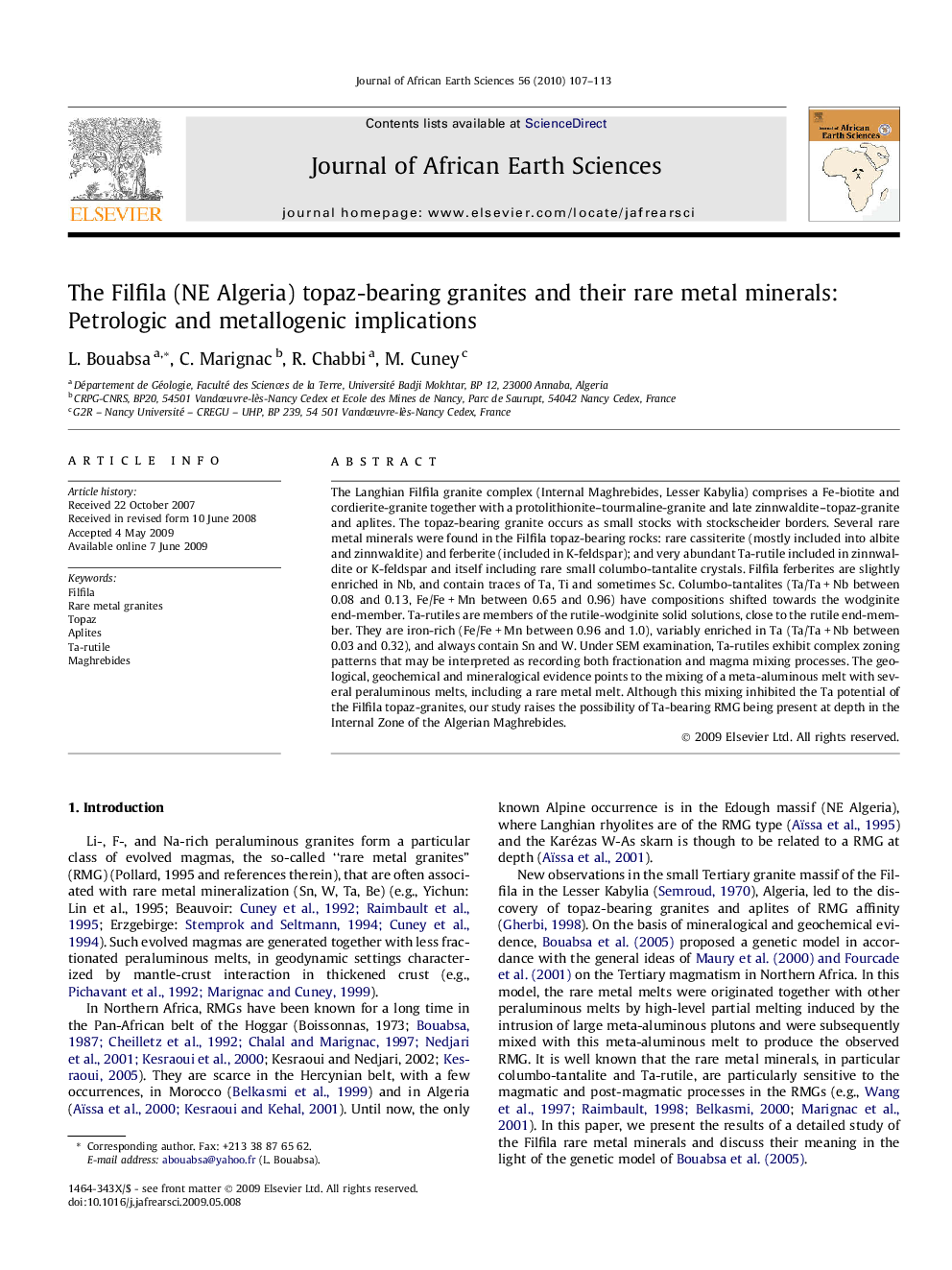| Article ID | Journal | Published Year | Pages | File Type |
|---|---|---|---|---|
| 4729372 | Journal of African Earth Sciences | 2010 | 7 Pages |
The Langhian Filfila granite complex (Internal Maghrebides, Lesser Kabylia) comprises a Fe-biotite and cordierite-granite together with a protolithionite–tourmaline-granite and late zinnwaldite–topaz-granite and aplites. The topaz-bearing granite occurs as small stocks with stockscheider borders. Several rare metal minerals were found in the Filfila topaz-bearing rocks: rare cassiterite (mostly included into albite and zinnwaldite) and ferberite (included in K-feldspar); and very abundant Ta-rutile included in zinnwaldite or K-feldspar and itself including rare small columbo-tantalite crystals. Filfila ferberites are slightly enriched in Nb, and contain traces of Ta, Ti and sometimes Sc. Columbo-tantalites (Ta/Ta + Nb between 0.08 and 0.13, Fe/Fe + Mn between 0.65 and 0.96) have compositions shifted towards the wodginite end-member. Ta-rutiles are members of the rutile-wodginite solid solutions, close to the rutile end-member. They are iron-rich (Fe/Fe + Mn between 0.96 and 1.0), variably enriched in Ta (Ta/Ta + Nb between 0.03 and 0.32), and always contain Sn and W. Under SEM examination, Ta-rutiles exhibit complex zoning patterns that may be interpreted as recording both fractionation and magma mixing processes. The geological, geochemical and mineralogical evidence points to the mixing of a meta-aluminous melt with several peraluminous melts, including a rare metal melt. Although this mixing inhibited the Ta potential of the Filfila topaz-granites, our study raises the possibility of Ta-bearing RMG being present at depth in the Internal Zone of the Algerian Maghrebides.
